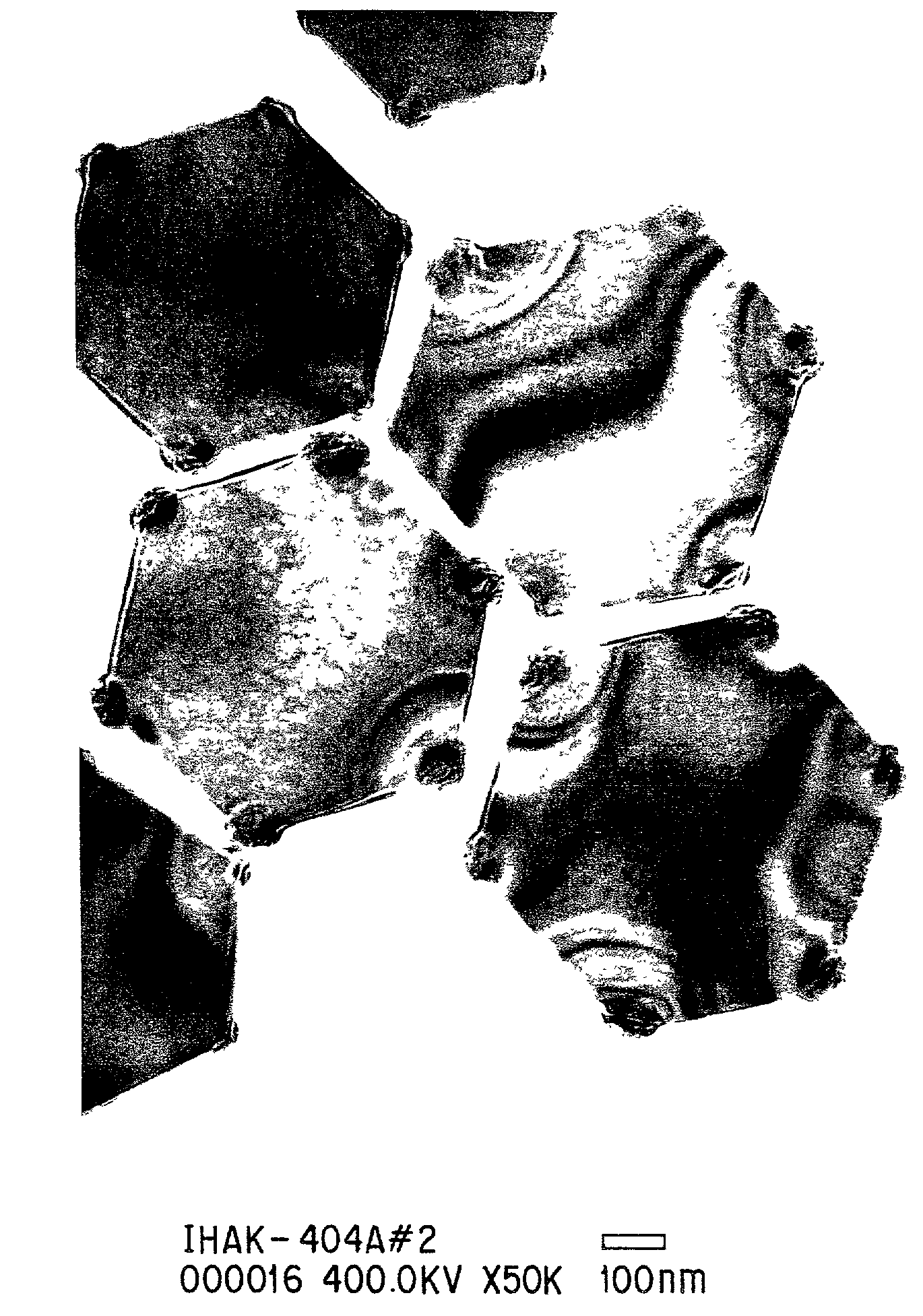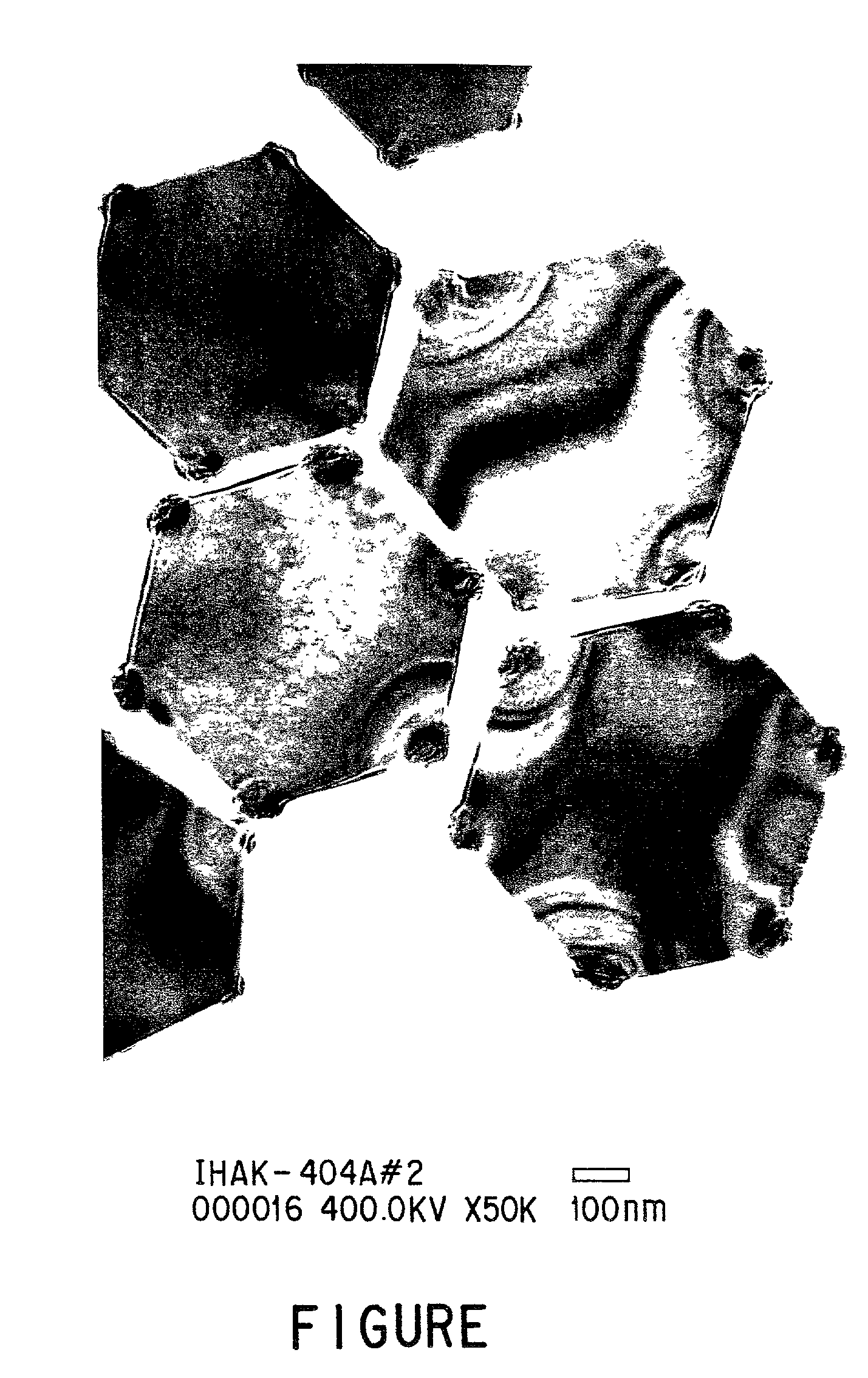Silver halide photographic emulsion
a silver halide and photographic emulsion technology, applied in the field of silver halide photographic lightsensitive material and silver halide photographic emulsion, can solve the problems of affecting the sensitivity of light-sensitive materials using epitaxial emulsion, affecting the sensitivity of light-sensitive materials, etc., to achieve good storage, increase the sensitivity of tabular grains, and improve the sensitivity
- Summary
- Abstract
- Description
- Claims
- Application Information
AI Technical Summary
Benefits of technology
Problems solved by technology
Method used
Image
Examples
example
[0241]The present invention will be specifically described by examples below. However, the present invention is not limited to there examples.
example-1
[0242]An epitaxial emulsion of the present invention will be described in detail below.
(Preparation of Emulsion of Present Invention)
[0243]1,100 mL of an aqueous solution containing 0.87 g of KBr and 0.95 g of low-molecular-weight oxidized gelatin having an average molecular weight of 20,000 was stirred at 35° C. An aqueous AgNO3 (3.0 g) solution and an aqueous solution containing KBr (2.1 g) and low-molecular-weight oxidized gelatin (28 g) having an average molecular weight of 20,000 were added over 40 sec. An aqueous solution containing 2.6 g of KBr was added, and the temperature was raised to 50° C. After an aqueous solution containing 32 g of succinated gelatin having an average molecular weight of 100,000 was added, an aqueous solution containing 71 g of sodium catecholdisulfonate was added. After that, an aqueous AgNO3 (231.4 g) solution and an aqueous KBr solution were added as first growth by the double-jet method at accelerated flow rates. During the addition, the silver po...
example-2
[0266]The structure of silver iodide of a host tabular grain will be described below.
(Preparation of Tabular-grain Emulsion a)
[0267]1,500 mL of an aqueous solution containing 4.1 g of KBr and 7.1 g of low-molecular-weight oxidized gelatin having an average molecular weight of 20,000 was stirred at 40° C. An aqueous AgNO3 (8.4 g) solution and an aqueous solution containing KBr (5.9 g) and KI (1.11 g) were added over 40 sec. An aqueous solution containing 35.5 g of succinated gelatin having an average molecular weight of 100,000 were added, and the temperature was raised to 58° C. After that, an aqueous AgNO3 (184.7 g) solution and an aqueous KBr solution were added as first growth by the double-jet method at accelerated flow rates. During the addition, the silver potential was held at −20 mV with respect to a saturated calomel electrode. In the middle of the addition, potassium iridium hexachloride and sodium benzenethiosulfonate were added. After that, an aqueous AgNO3 solution (21....
PUM
| Property | Measurement | Unit |
|---|---|---|
| equivalent-circle diameter | aaaaa | aaaaa |
| equivalent-circle diameter | aaaaa | aaaaa |
| thickness | aaaaa | aaaaa |
Abstract
Description
Claims
Application Information
 Login to View More
Login to View More - R&D
- Intellectual Property
- Life Sciences
- Materials
- Tech Scout
- Unparalleled Data Quality
- Higher Quality Content
- 60% Fewer Hallucinations
Browse by: Latest US Patents, China's latest patents, Technical Efficacy Thesaurus, Application Domain, Technology Topic, Popular Technical Reports.
© 2025 PatSnap. All rights reserved.Legal|Privacy policy|Modern Slavery Act Transparency Statement|Sitemap|About US| Contact US: help@patsnap.com



